300F Clément Serveau
"Ceres and Mercury"
Just like the 5000F Flameng, the 300F Clément Serveau or "Ceres and Mercury" is an iconic and mysterious banknote. Often the jewel of a collection, it remains misunderstood. We present here a small piece of its history.
It begins in 1930 with an unadopted study of a 10 Franc note by Clement Serveau.
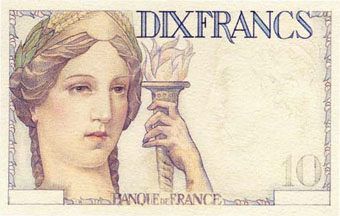
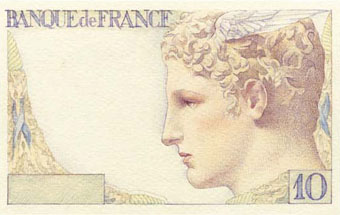
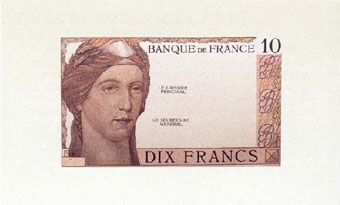
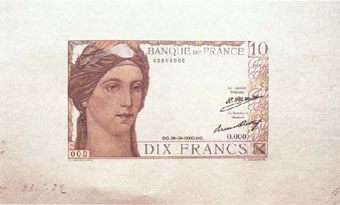
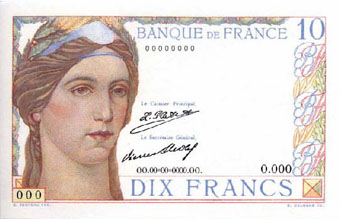
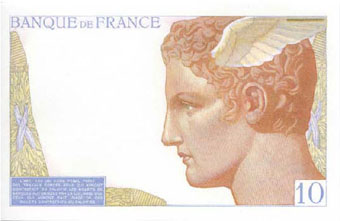
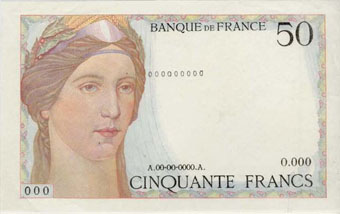
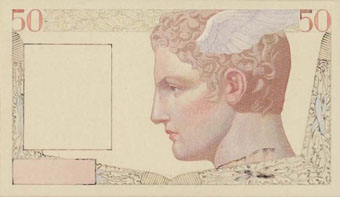
These proofs of the 50 F are based on the original watercolor, they predate the events of 2nd and 3rd type of 10 F
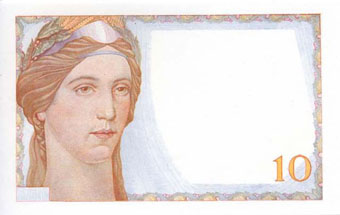
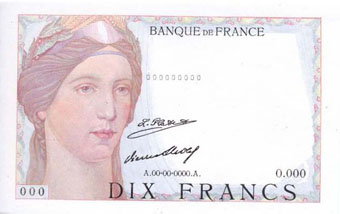
In 1938 a serious diplomatic crisis broke out with Germany, the risk of war caused a run on the banks. 5000F Flameng and Victory type 1934 notes held in reserves are used, and the significant decrease in supply at Bank of France requires the General Council to respond.
Given this exceptional situation, the General Council ordered the creation of 300 F and 3000 F notes. These two values are chosen to express the uniqueness of the situation. The urgency is such that reserves of old projects, including that of 10 F Ceres and Mercury of Clement Serveau was chosen because it is unlike any of the notes previously used and therefore falls perfectly into the criteria of the Bank of France: an exceptional situation requires exceptional banknotes. The 3000 F will be green and single-sided and 300 F on white will use the Serveau project.
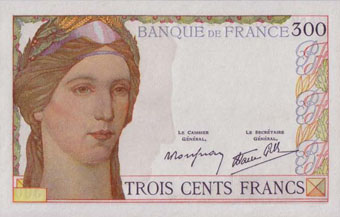
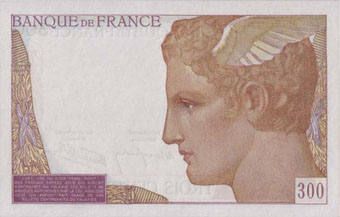
The Munich agreement temporarily soothes relations between France and Germany. However, the 300F is still created on October 6, 1938, printed by Prior and Dubois and immediately placed in reserve.
Similarly, the 3000F was never be made, but replaced by a new version of the 5000F Victory.
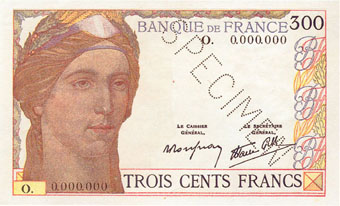
The numbering of the note was added to the proof, this one is modified from the specimen 10 Francs.
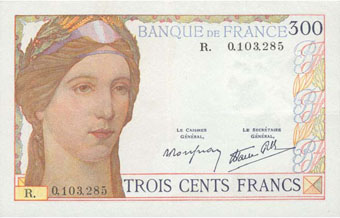
Issued note is fully consistent with preceding specimen.
Given the shortage of paper, the 300F is printed on paper from the remaining 10F Minerva type 1915. The watermark of 300 F is the same as that of 10 F with Mercury in profile.
With the start of WWII, these notes were not released but stored, likely in Nancy, Epinal and Saint Dizier between September 1939 and May 1940.
Several documents of the Bank of France from 1944 to 1945 show examples from various branches of the German army requesting as a deposit on the "compensation of occupation". René Favre Gilly authorized remittances to pay for "compensation". The Germans find that this 300F banknote had no legal value at the time and they abandoned it.
At the time of monetary reform, it was eventually released on June 3, 1945, intended to replace all notes larger than 50 francs.
But it was not a successful denomination, neither for the public or to employees of the Bank of France, who found it difficult to recognize. It was considered a duplication of the 500F a denomination already existing in two banknotes. The 300F note was finally removed, despite the shortage of 500F-type blue and pink.
The 300F was gradually withdrawn from circulation (between 1948 and 1950) and devalued on January 1, 1963. From one estimate of the Bank of France, about 146,000 banknotes were not reimbursed, a figure that may seem large, but we must consider that it does not take into account those destroyed, burned, mutilated or simply discarded. Compared to other denominations, the 300F note was reimbursed in significant numbers, confirming its unpopularity with the French, unlike our current viewpoint as collectors.
The notes were issued with three dates:
- 06-10-1938: alphabet letters A to M, a million notes by letter numbered from 1 to 1,000,000.
- 24-11-1938: letter W replacement note, 852,000 notes issued to replace 852,000 notes on which mistakes were made, some of which (17,000) were destroyed and not used because the replacement note mistakes
- 09-02-1939: alphabet letters N to Z, also 1 million note per alphabet.